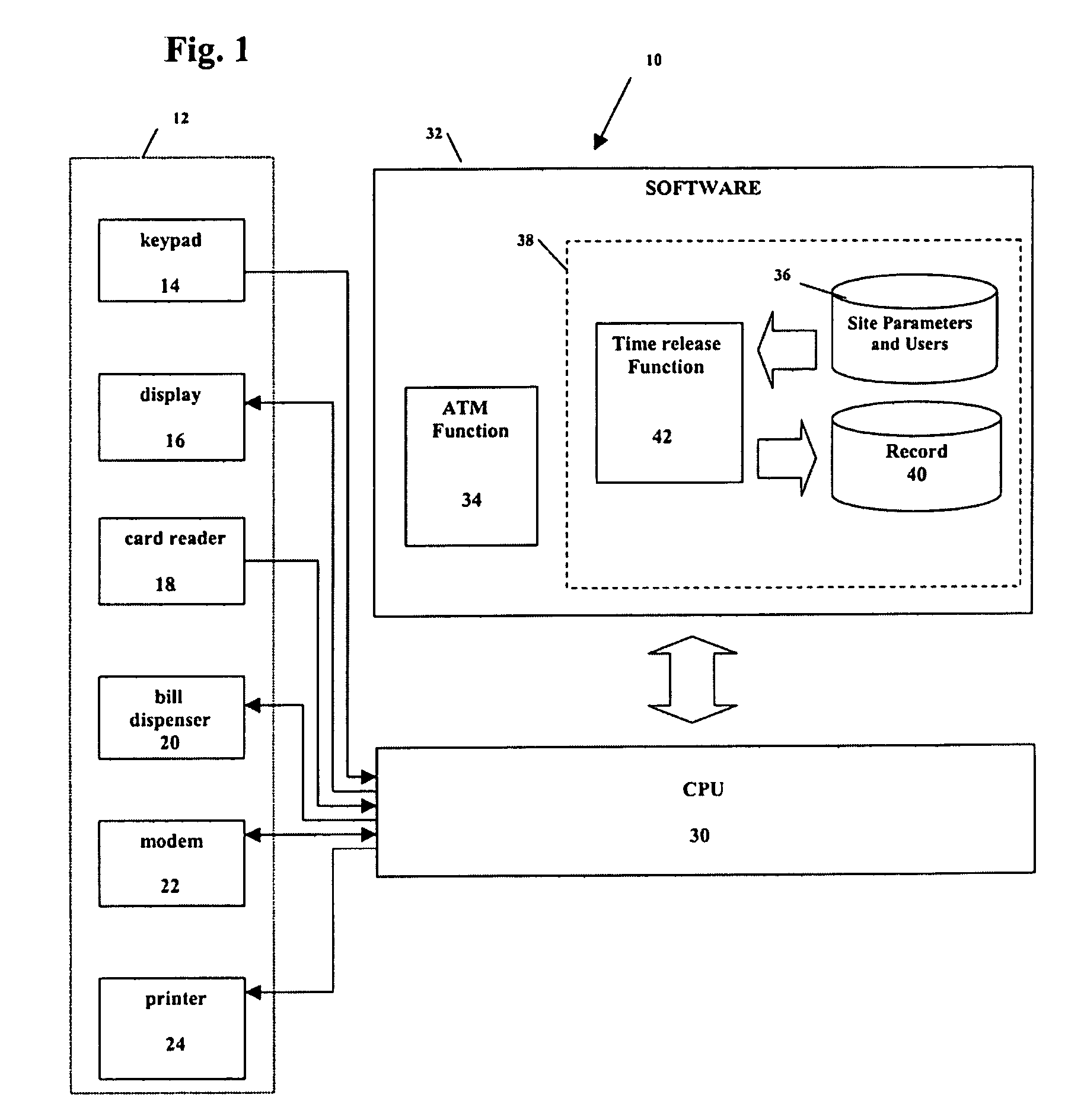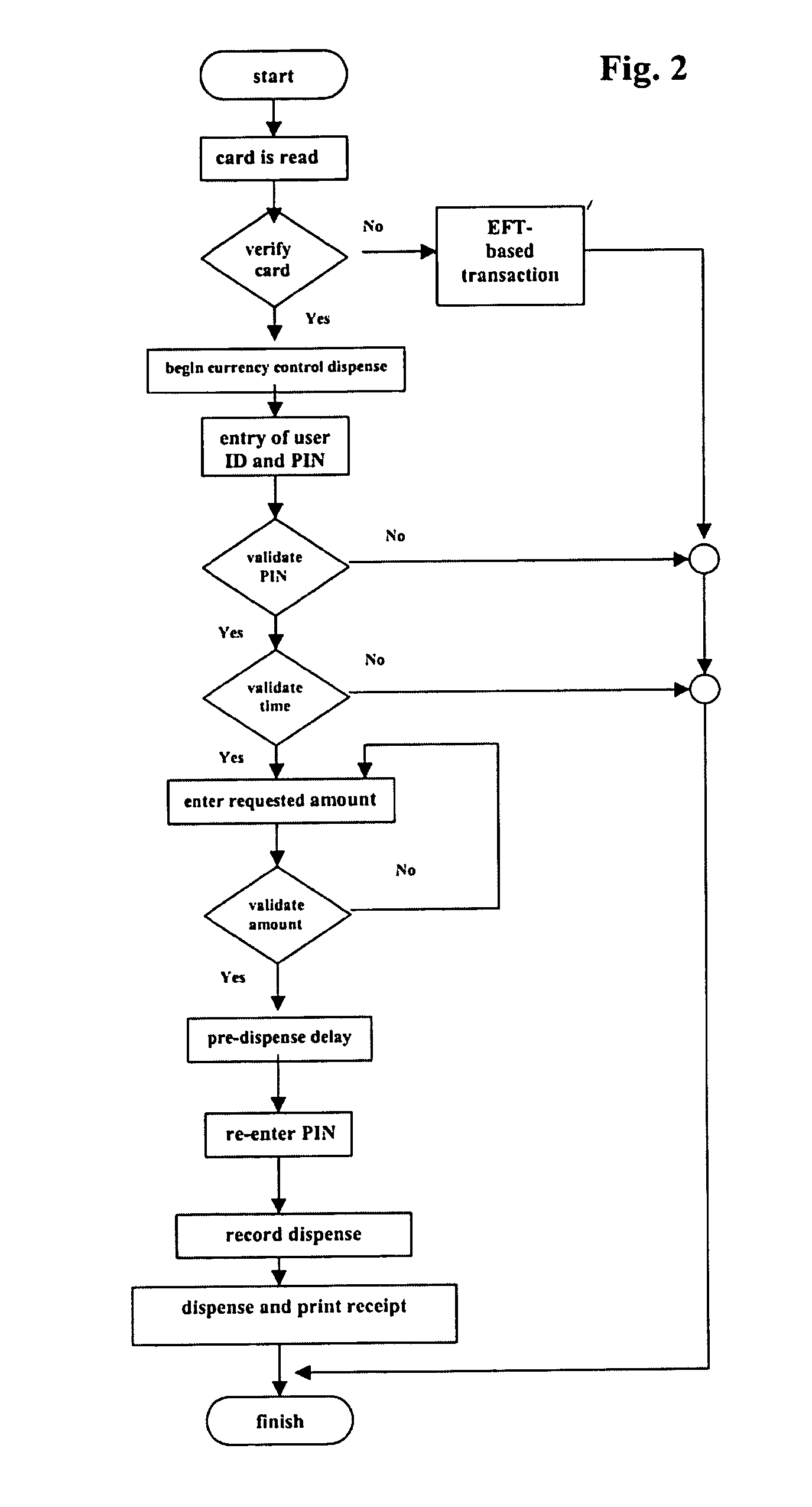In the 1970s, when convenience stores began extending their hours, the incidence of armed robberies increased at an alarming rate.
Specifically, the use of a time-release safe to store an establishment's change fund and excess cash made a commercial establishment less attractive to a potential robber because, other than the minimal required amount in the cash register, there was little readily available cash in the store.
Because a time-release safe is programmed to dispense a specified amount of cash on a time-
delay basis as a merchant or merchant-approved employee requires funds, (e.g., not more than once every five minutes), a store's excess cash is not available quickly and the robber is forced to go elsewhere.
Further, the fact that the safe is programmed to dispense a specific amount of cash no more than once during a certain time period (which period can range from one to 99 minutes) means that, when confronted with a robbery, a merchant or merchant's employee cannot be forced to dispense more than the maximum amount of money the safe has been programmed to dispense, unless the robber is willing to wait until the time
delay has expired.
Thus, in most instances, a robber will take only the cash in the cash register and the maximum amount dispensed by the time-release safe, limiting the merchant's monetary loss to a few hundred dollars.
The ability to generate these reports further facilitates management control of on-site cash, which has historically been a problem for merchants, who are often plagued by “shrinkage.” Shrinkage is the term sometimes used in the retail industry for inventory (cigarettes, candy, beer / soft drinks, etc.) and money / cash that “disappears” from a merchant's location and that cannot be accounted for.
Typically an employee is suspected of taking the money but without any proof the merchant cannot prosecute anyone.
ATMs, costing $20,000 to $40,000 each and requiring dedicated, and thereby expensive, leased telephone lines, are typically purchased by banks and are generally installed at a
bank or at a location having a business relationship with a
bank.
Although the resulting ATM had limited capabilities in comparison with the Diebold and IBM ATMs, it cost only approximately $8,000 to $10,000 and did not require the use of a dedicated leased
telephone line.
The newest ATM products, whose sales number in the hundreds of thousands, are not true ATMs, but rather are cash dispensers that do not accept deposits or include the full
repertoire of functions provided by the more expensive ATMs.
While recent technological advances in time-release safe design have aided in effecting a decrease in robberies, the increasing popularity of electronic gaming stations (e.g., video poker) in many establishments, in combination with the market and
consumer pressure to immediately distribute winnings in cash, has resulted in an increase in robberies of commercial establishments having electronic gaming stations.
The high cost of
purchasing both an ATM and a time-release safe limits many merchants from
purchasing both machines.
Further, both machines occupy a significant amount of space that merchants are often unable or unwilling to provide.
The time-release safes including tube machines are inconvenient for this purpose because they were designed for use in convenience stores, where coins and small bills were the most commonly used currency.
Maintaining an EFT host is expensive, and when the connection with the EFT host becomes unavailable due to power disruption, inclement weather, a busy phone line, or inoperational hardware, the system cannot be used.
Second, all transactions result in the dispensation of scrip rather than cash.
This time-consuming process inconveniences the customer and requires the establishment to have sufficient people working at each shift to perform this duty in addition to their other responsibilities.
 Login to View More
Login to View More  Login to View More
Login to View More 


